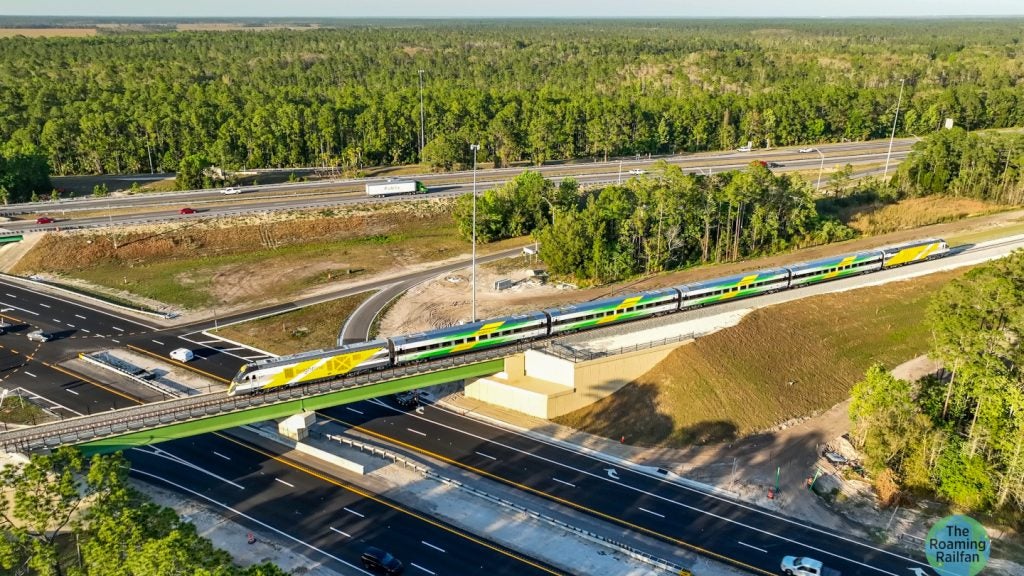
All Aboard Florida is a 235-mile (378km) high-speed intercity passenger rail project being developed by Florida East Coast Industries (FECI) to connect Miami in South Florida with Orlando in Central Florida, US. Scheduled to begin operations in 2016, it will be the first passenger railway system in the US to be owned, operated and maintained by a private company.
Phase I of the project connecting Miami and West Palm Beach via Fort Lauderdale will utilise 195 miles (313.8km) of existing tracks owned by FECI between Miami and Cocoa. Phase II of the project is expected to begin passenger service in 2017 and will extend the high-speed line to Orlando International Airport through 40 miles (64.37km) of new track.
All Aboard Florida trains will operate at speeds up to 125mph (201.1km/h) and reduce the travel time between the two cities to just three hours. More than 10,000 jobs are expected to be created during the construction of the high-speed rail project.
Financing for the All Aboard Florida project
The privately-owned passenger rail project is estimated to cost $3bn, which will be met through 80% loan and 20% equity. The wholly owned subsidiary of FECI, All Aboard Florida has applied for a railroad rehabilitation and improvement financing (RIFF) loan of $1.6bn from the US Federal Railroad Administration (FRA).
All Aboard Florida station details
The Miami-West Palm Beach segment of the passenger rail system involves the construction of three state-of-the-art new stations at Miami, Fort Lauderdale and West Palm Beach. The designs for the three stations were unveiled in May and July 2014.
The stations housing retail outlets, hotels and restaurants will be strategically located near major cultural, shopping and business centres and be situated close to existing rail, trolley and pedestrian networks, which will create an intermodal transport hub.
The 4-level Miami terminal station covering an area of three million square feet in total will span two sites – a nine-acre transportation hub and a two-acre Overtown development. The rail tracks will enter the station at an elevation of 50ft to align with the existing Tri-Rail and Metromover systems. Shops will be situated below the tracks at ground level. Parking spaces will be available at the Overtown development. Both sites will contain residential, commercial and retail spaces.
The 60,000ft² West Palm Beach and Fort Lauderdale stations will include a multi-story lobby, an elevated passenger lounge area and connections to other transportations systems, such as Tri-Rail stations, Amtrak stations, Sun Trolley, Broward County Transit system and the future Wave Streetcar.
Rolling stock
All Aboard Florida will initially use five bi-directional train sets to be supplied by Siemens. Each train-set will consist of four stainless single-level steel passenger coaches and two ‘Charger’ diesel-electric locomotives. Each train will be less than 1,000ft long and will have a capacity for 400 passengers.
All Aboard Florida trains will be the first set of trains to be manufactured by Siemens at its solar-powered rail manufacturing unit in Sacramento, California. The passenger cars will feature platform level-boarding without steps, making it easy for cycles, walkers, strollers and wheelchairs to board the train.
Cummins will manufacture the 4,400hp (3,281kW)-rated Tier 4 QSK95 diesel engines for ‘Charger’ diesel-electric locomotives at its plant in Seymour, Indiana. Traction motors and gearboxes will be provided by Siemens plant in Norwood, Ohio, while the propulsion equipment will come from Alpharetta, Georgia. Each locomotive will feature an improved car-body structure equipped with crash energy management mechanism.
The Illinois High Speed Rail Project aims to convert the 450km route between Chicago and St Louis into a high-speed service.
Following environmental approvals and additional financing for Phase II (West Palm Beach to the Orlando International Airport), two more coaches will be added to the initial trainsets and five more trainsets will be purchased for All Aboard Florida high-speed rail line.
The train maintenance and service facilities will located at West Palm Beach and the Orlando International Airport stations and employ 120 full-time employees.
Contractors involved with All Aboard Florida high-speed rail project
Siemens was selected to provide the rolling stock for All Aboard Florida in September 2014. Skidmore, Owings & Merrill (SOM) in association with Zyscovich Architects provided design for the stations of the high-speed passenger rail project.
Suffolk Construction was selected as the construction manager for All Aboard Florida’s Miami Station in July 2014.
AMEC Environment and Infrastructure was selected as the environmental engineering firm for the project in September 2012, where as HNTB was engaged as the programme manager.
Demand for high-speed rail service in Florida
Florida welcomed nearly 95 million tourists in 2013, recording a 3.5% increase over the previous year. Orlando alone was visited by 59 million visitors, surpassing New York as the most-visited city in US. More than 50 million people travel between Central Florida and South Florida annually.
The All Aboard Florida rail service is expected to ease automobile congestion on Florida highways by taking off three million cars on the roads each year.










